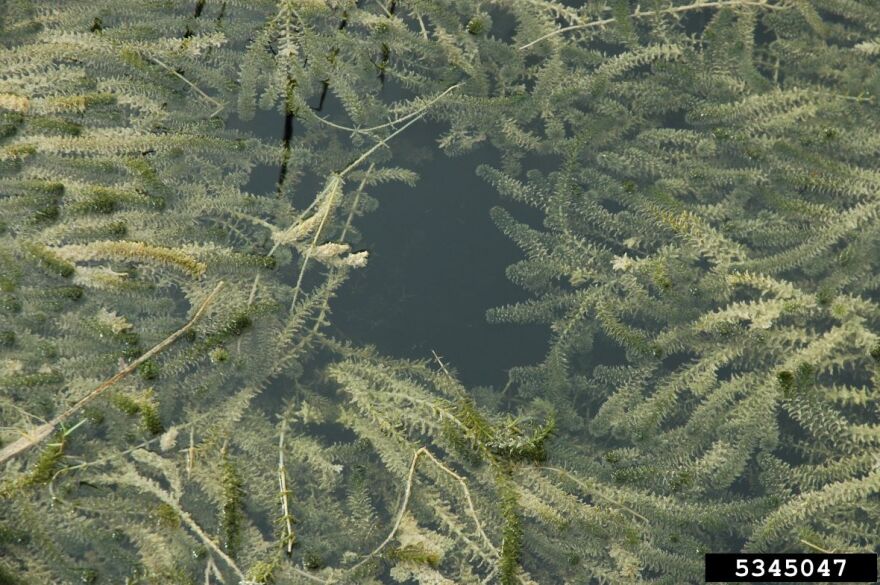ENDWELL, NY (WSKG) — Invasive species continue to be problematic throughout the Finger Lakes and there is potential that new species will continue migrating into the region, further exacerbating the situation.
Catherine McGlynn, Aquatic Invasive Species Coordinator for the New York Department of Environmental Conservation, presented updates on which invasive species may be moving into the region to the Owasco Watershed Lake Association on Saturday. She said many of the existing problematic invasive species are still likely to stick around this year, but some others could also be on the rise.
Hydrilla was first discovered in the southern part of Cayuga Lake in 2011, and has continued to be a regular problem especially during the early summer months. McGlynn said the invasive aquatic weed has also been found in other lakes, likely transported on boats and trailers that haven’t been properly cleaned.
“The original infestation was in southern Cayuga, but it has spread and it's generally found in marinas and boat access points,” McGlynn said. “That's a very strong correlation, so we know that it's being spread by boats and trailers and we really need to be aware of that and keep that in mind when we're moving from lake to lake. We need to clean, drain and dry."
The excessive debris from dead hydrilla and other plants, McGlynn and others explained, could be a major contributor to the development of harmful algae blooms, which pose serious health risks and effectively stymies many recreational activities on the lakes.
Though all signs point to hydrilla sticking around, McGlynn said it may unfortunately be joined by two other plants highly used and coveted by aquatic gardeners: water hyacinth and water lettuce.
"They are up and coming in terms of overwintering in New York,” McGlynn said. “They are two of the go to aquatic plants for aquatic gardeners, unfortunately. So this may be an uphill battle for us, but we're starting it."
McGlynn said the most common way the invasive plants are introduced is through aquariums being dumped into public waterways. She encouraged people who need to dispose of aquarium species to humanely dispose of them otherwise.
In addition to the flora, McGlynn warned of two additional species that may be making potential moves through the Finger Lakes.
The round goby is a bottom feeding fish species that was likely brought to the Great Lakes through ballast water on a tanker ship, like many invasives. While they look like relatively harmless bottom feeders, McGlynn said they can severely disrupt an ecosystem.
"They are veracious. And I will say that, my key to identifying them, I consider them the chipmunk of the fish world because they have very chubby cheeks,” McGlynn said, noting they’ve been spotted in the Mohawk River recently and may make their way to the Hudson.
She added the bloody red shrimp might be discovered in local waterways soon. The crustaceans are translucent with orange red areas and large black eyes. They tend to swarm at night.
McGlynn said anybody who believes they have found an invasive species should take a picture, preferably close up with a size comparison, and call the DEC at (718) 482-4922.


